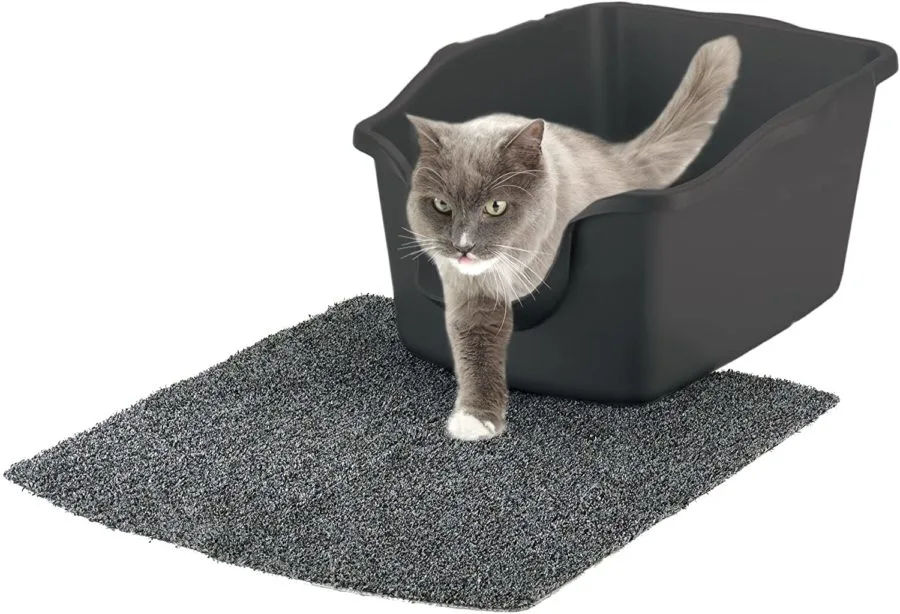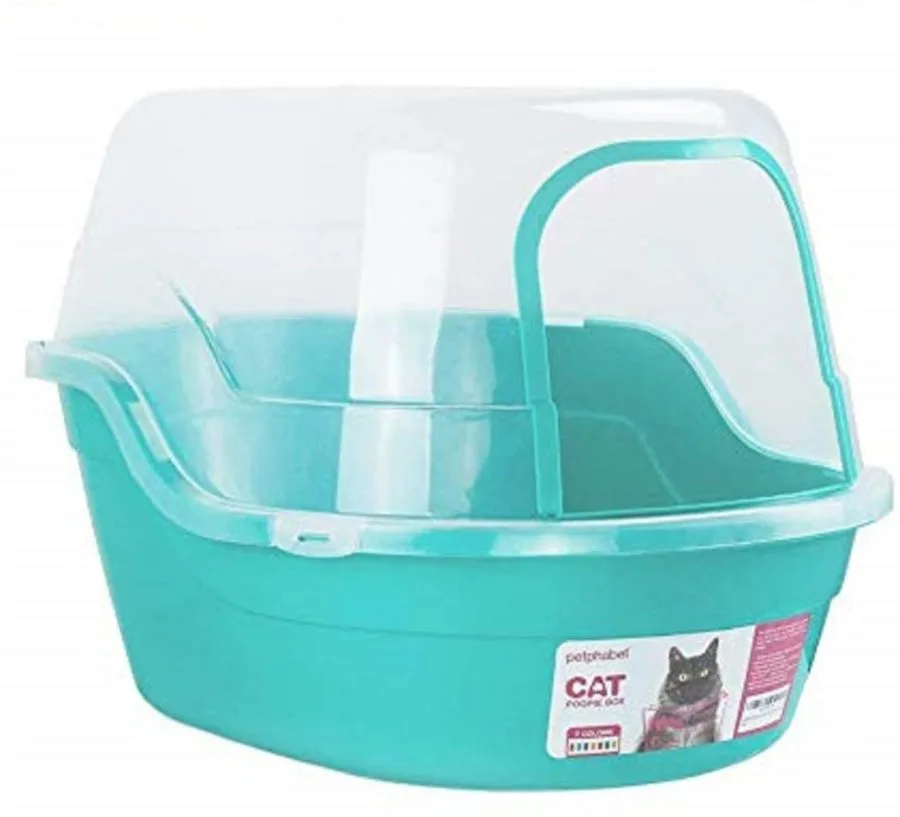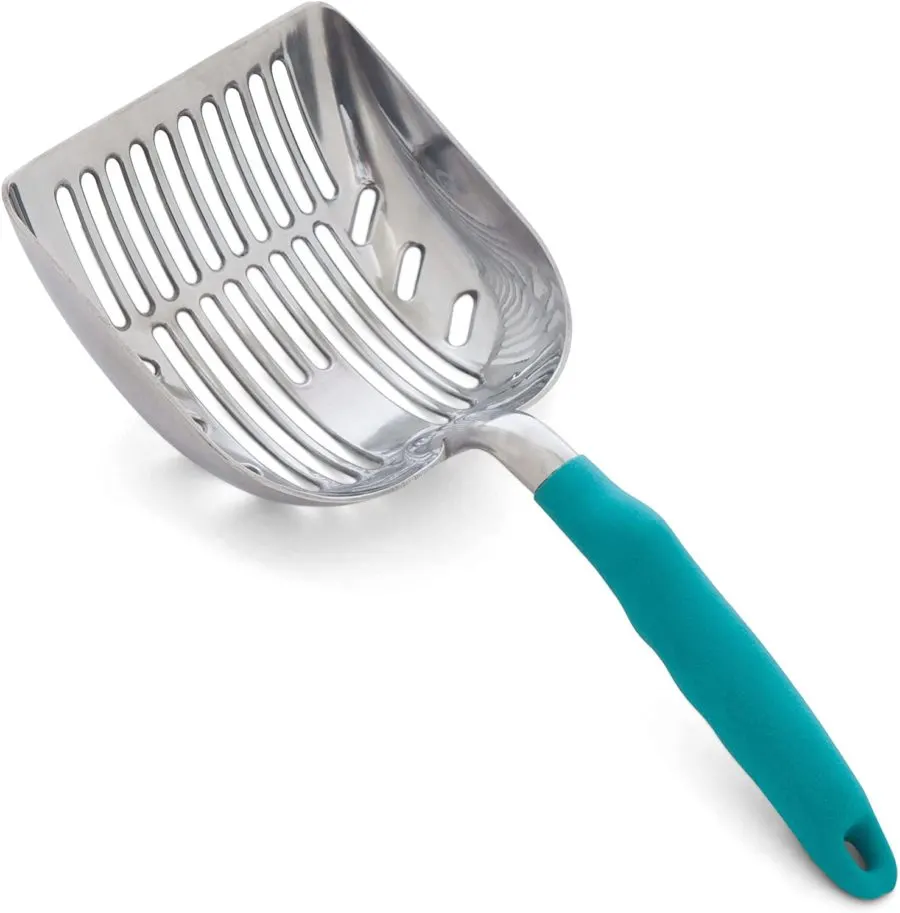We’ve all seen the popular toilet paper commercials urging everyone to “enjoy the go.” Well, the same holds true for our cats. If our cats love the litter box, they will USE the litter box, a step in the right direction when it comes not only to our homes’ cleanliness but also our cats’ health. With some pre-planning, product selection and careful arrangement, you can help your cat learn to love the litter box!

This post includes affiliate links.
Make sure your litter box doesn’t stink.
You don’t want to use a smelly public toilet and your cat doesn’t want to use a stinky litterbox.
Even if you scoop that poop (and pee), litterboxes can quickly develop the overpowering scent of ammonia–a problem not only for your cats but for the humans in your home.
Keep the litter box out of household traffic.
No one wants to go to the bathroom in a crowd. ‘Nuff said.
Offer multiple boxes.
How many litterboxes should you have? The rule of thumb is one box per cat plus one–so even if you only have one cat, you need two litterboxes.
Some cats like to pee in one box and poop in another. Nothing like having options, right?
Offer boxes in multiple locations.
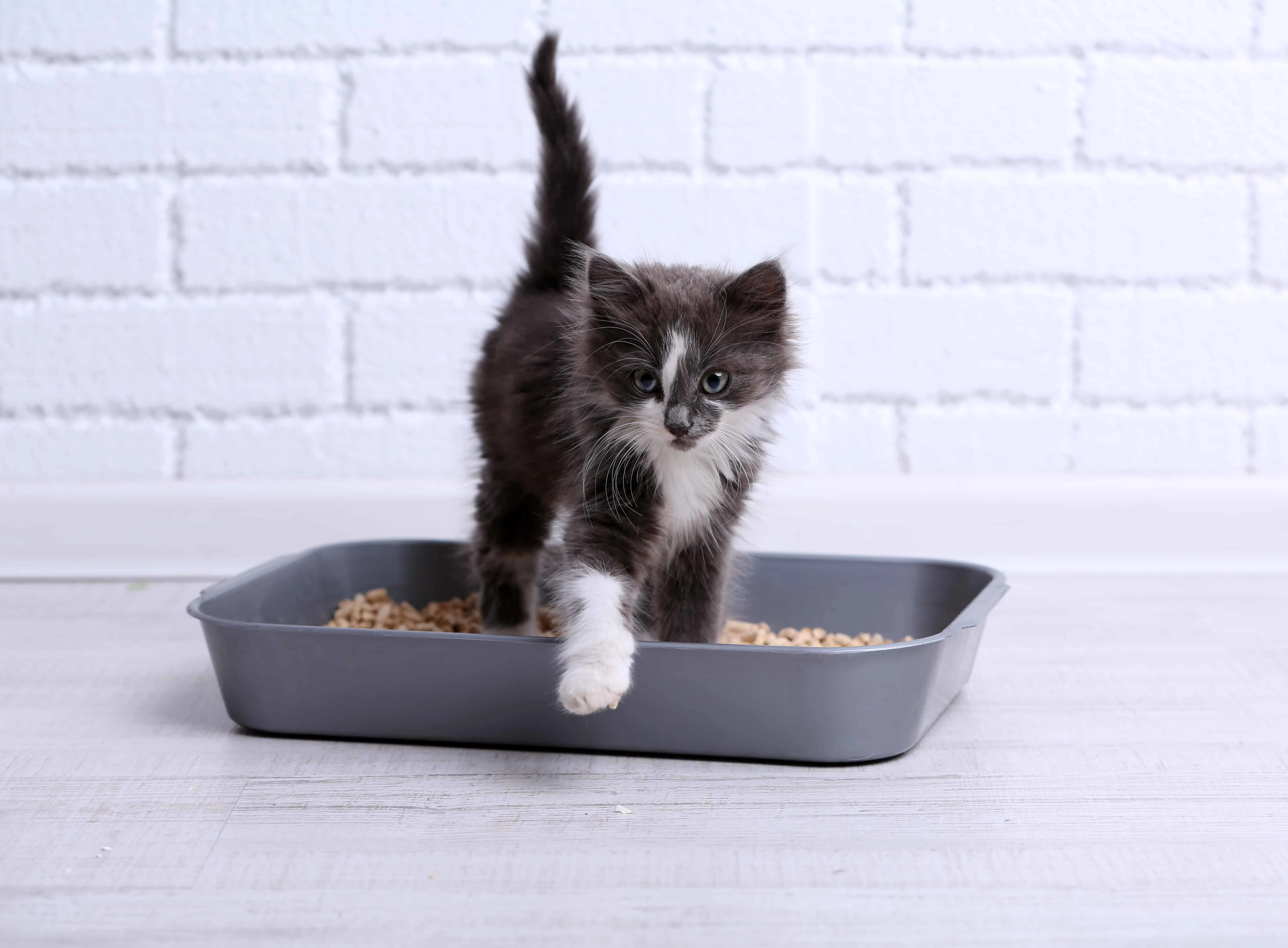
When you set out those multiple litterboxes, don’t clump them all together.
If you have more than one cat, a dominant cat can rule the roost–or at least the restrooms–if you place all boxes in one room.
If you only have one cat, your cat might suddenly find something off-putting or scary about one location but be just fine about another location in the house, so it pays to place those boxes in multiple locations.
Just as you don’t want the box near foot traffic, don’t choose locations that are too noisy–like laundry rooms. Shy cats can be wary of loud appliances so try to find places in your home that are quieter.
Also, if you have multiple floors in your home, consider a box on each floor. Think how you feel if suddenly you need to go to the bathroom–it’s nice to have a toilet on the same floor, right?
Don’t overfill the box.
Have you ever been to the beach and walked barefoot in deep sand?
Not very pleasant as you sink down and slog through the sand, right?
Your cat gets that same sensation if you pour the litter more than a couple of inches deep.
Make sure the box is the right size.

As you’ve probably noticed, your cat doesn’t just hop in the litter box, do her business, and hop back out. She turns and digs and turns some more. All that movement requires a little elbow room!
Unfortunately many commercial litter boxes are too small, leaving your cat feeling constricted (or, in some cases, causing your cat to kick litter out of the box or even overshoot the sides of the litter box and accidentally pee over the edge).

Ideally, the litter box should be at least one and one half times the length of your largest cat.
And, if your cat is a senior, don’t select one with high sides that might strain older joints.
Don’t use deodorizers
Our cats noses are much more sensitive than our own; deodorizers (both the kind you sprinkle on top of the litter and heavily scented cat litter) can be off-putting to your cat.
Don’t box in the litter box.
Don’t box me in! That warning goes not only for hooded litterboxes but for dead end destinations.
Hooded litterboxes are frightening for many cats who would like to see who’s walking up on them during litterbox use, a time when cats feel vulnerable.
If you absolutely need a hooded litterbox, don’t just make sure it’s extra large but also seek out one with a clear hood so your cat can see incoming traffic.
Also, be careful about boxing in your cat’s box in a dead end of your home, where there’s only one way out, such as a small bathroom. Some cats are very leery of being caught in the box without an escape route.
Scoop more often.
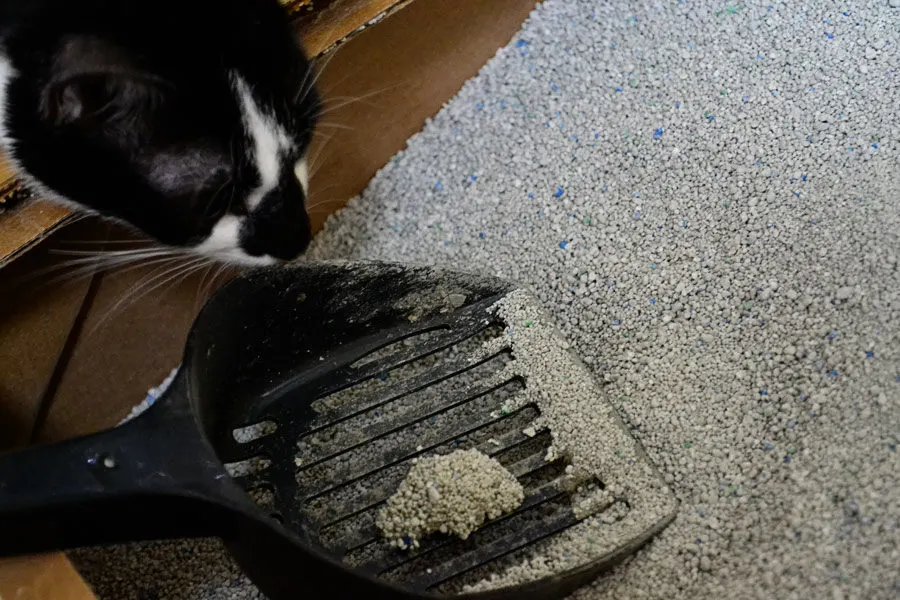
Scoop and scoop again!
How often should you scoop the litterbox? At a minimum, be sure you remove all solids from the litterbox once a day.
Skip the liner.
Litterbox liners are designed to make cleanup easier but unfortunately they tend to be a snagging risk.
You know how unpleasant it is to snag a fingernail when you reach in a purse or a pocket? Your cat gets that same negative sensation when she snags a claw on a litterbox liner.
With just a little effort, your cat can learn to love the litterbox–something that’s important not only for your home cleaning but also for your cat’s urinary health!
What About Kittens?
In our experience, training your new kitten to love the litter box is a pretty easy task. Yes, there will be a mistake or two (but remember: we weren’t born potty trained ourselves!) Yes, you may think that your kitten is litter trained and they might forget once or twice. In general, though, cats are neat, tidy animals and take to the concept of the box very quickly.
When we adopted our cat Coco at just one month old, she mistook the bathroom rug for the litter box a time or two but otherwise was in the litter box habit within just a couple of days. Basically if the litter box is easy for the kitten to find (think how large your house is to a small kitten!) and is short enough for the kitten to easily climb in, they’ll quickly learn that litter box means toilet.
Petmate, a company that produces starter litter kits just for kittens, offers some additional tips on helping your kitten learn about the litter box:
- It is important to find the right litter box for your new kitten. And, with so many styles available, it can easily become a daunting task.
- A good rule of thumb is to find a box with lower sides that they can easily get in and out of (about 1 inch).
- Place your kitten in the litter box after feeding, and anytime she begins nosing in corners or squatting. Gently scratch the kitten’s front paws in the filler. If your kitten has an accident, wipe it up with a paper towel and put it in the litter box, and place the kitten in the litter box.
- Do not punish your cat for having an accident. This won’t help them learn to use the litter box – it will only teach them not to go to the bathroom in front of you.
- 🎉 GIVEAWAY: Lord of the Pets Portrait of Your Cat! - November 26, 2024
- Review: Lord of the Pets Cat Portraits! - November 26, 2024
- Cat Adoption: FAQ You Might Have - June 28, 2024

